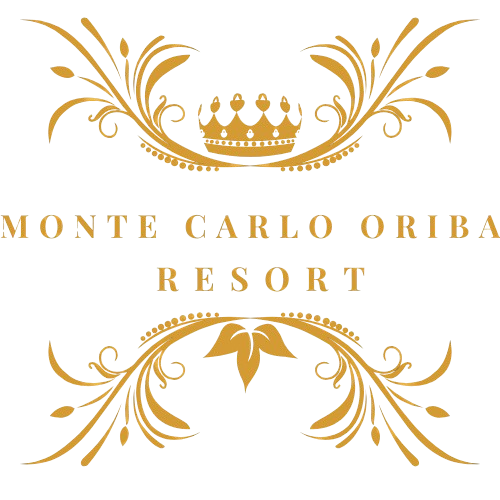Monte Carlo Oriba Landscapes
1. Coastal Landscapes
• Sandy Beaches: Expansive sandy beaches with soft, golden sand, gentle waves, and areas for sunbathing, beach sports, and picnicking. Palm trees and beach umbrellas provide shade.
• Rocky Shorelines: Dramatic cliffs and rocky outcrops with tide pools, offering opportunities for exploration and marine life observation. Scenic viewpoints could be placed along the cliffs for breathtaking ocean views.
• Coastal Dunes: Natural sand dunes planted with native grasses and wildflowers, helping to stabilize the sand and provide habitats for local wildlife.
2. Forest Landscapes
• Wooded Areas: Lush forests featuring a mix of deciduous and evergreen trees, creating shaded trails for hiking and nature walks. The forest floor is carpeted with ferns, wildflowers, and mushrooms.
• Picnic Groves: Designated picnic areas within the forest, complete with tables, benches, and fire pits, allowing families and groups to enjoy the serene surroundings.
• Wildlife Habitats: Natural habitats designed to support local fauna, with birdhouses, bee hotels, and small ponds for amphibians.
3. Meadow Landscapes
• Wildflower Meadows: Expansive fields filled with colorful wildflowers, attracting pollinators like bees and butterflies. Walking paths could meander through the meadows for visitors to enjoy the vibrant scenery.
• Open Spaces: Large, open areas for recreational activities such as frisbee, kite flying, and yoga classes, with plenty of space for relaxation and enjoyment of nature.
4. Mountain Landscapes
• Scenic Overlooks: Elevated viewpoints along hiking trails that offer panoramic views of the surrounding mountains, valleys, and lakes. Benches could be placed at these spots for visitors to rest and take in the scenery.
• Alpine Trails: Well-marked hiking trails that wind through mountainous terrain, featuring a mix of rocky paths, gentle slopes, and challenging climbs for various skill levels.
• Mountain Streams: Clear, flowing streams and small waterfalls that cascade down the mountains, creating serene spots for relaxation and nature observation.
5. Wetland Landscapes
• Swamps and Marshes: Areas of rich biodiversity with native plants, reeds, and water lilies, providing habitats for birds, amphibians, and other wildlife. Boardwalks could allow visitors to explore these ecosystems without disturbing them.
• Birdwatching Platforms: Elevated platforms for birdwatching, offering views of migratory birds and local species in their natural habitats.
• Educational Signage: Informational signs along paths and boardwalks to educate visitors about wetland ecosystems, their importance, and the species that inhabit them.
6. Garden Landscapes
• Botanical Gardens: Curated gardens featuring a variety of plant species, including native flowers, shrubs, and trees. The gardens include themed sections, such as a sensory garden or a butterfly garden.
• Community Garden: A space where residents can grow their own fruits, vegetables, and flowers, fostering community engagement and sustainable practices.
• Meditation Gardens: Quiet, peaceful spaces designed for reflection and relaxation, with comfortable seating, water features, and fragrant plants.
Overall Atmosphere
• Diverse Ecosystems: Each landscape would contribute to a rich tapestry of ecosystems, promoting biodiversity and environmental health.
• Recreational Opportunities: The varied landscapes would provide countless recreational opportunities, from hiking and biking to birdwatching and picnicking.
• Community and Connection: By creating spaces for gathering, education, and exploration, the landscapes at Monte Carlo Oriba fosters a sense of community and connection to nature.
This vision of diverse landscapes at Monte Carlo Oriba highlights the potential for creating a beautiful, functional environment that enhances the natural beauty of the area while providing numerous benefits to the community and its visitors.
Imagining a series of artificial lakes at Monte Carlo Oriba can lead to a beautiful and serene landscape that enhances the natural beauty of the area while providing recreational and ecological benefits.
Monte Carlo Oriba Artificial Lakes
Overall Design Concept
• Naturalistic Design: The artificial lakes would be designed to mimic the natural contours and features of the landscape, with varying shapes and sizes to create a more organic look.
• Ecological Integration: The lakes are designed to support local wildlife, with surrounding vegetation that includes native plants, trees, and shrubs that create habitats for birds, fish, and other wildlife.
Key Features
1. Lake Layout:
• Multiple Lakes: A network of interconnected lakes of varying sizes, each with its unique character. Some could be large and open, while others might be smaller and more secluded.
• Shoreline Diversity: Each lake could have a mix of sandy beaches, rocky shorelines, and lush vegetation, providing diverse habitats and recreational areas.
2. Recreational Areas:
• Water Activities: Designated areas for activities such as kayaking, paddleboarding, and fishing, with rental stations for equipment.
• Picnic Spots: Scenic picnic areas with tables and benches situated along the shores of the lakes, allowing visitors to enjoy the views and relax by the water.
• Walking and Biking Trails: A network of trails winding around the lakes, offering opportunities for walking, jogging, and cycling, with viewpoints and rest areas along the way.
3. Flora and Fauna:
• Native Plant Landscaping: The areas around the lakes would be landscaped with native plants to promote biodiversity, including flowering plants that attract pollinators and shrubs that provide shelter for wildlife.
• Wildlife Observation Points: Designated areas for birdwatching and wildlife observation, with platforms or hides for visitors to enjoy the natural surroundings without disturbing the animals.
4. Sustainable Features:
• Natural Filtration Systems: Incorporating plants and wetlands around the lakes to help filter water and maintain water quality naturally.
• Rainwater Harvesting: Systems designed to collect and utilize rainwater for maintaining the lakes and surrounding landscapes.
5. Artistic Elements:
• Sculptures and Installations: Integrating art installations and sculptures along the lakeshores to enhance the aesthetic appeal and create focal points for visitors.
• Floating Gardens: Innovative floating gardens or islands with native plants that can provide additional habitats for wildlife and enhance the beauty of the lakes.
6. Cultural and Educational Opportunities:
• Visitor Center: A central facility that offers educational programs about the local ecosystem, the importance of water conservation, and recreational opportunities available at the lakes.
• Event Spaces: Areas designated for community events, such as outdoor concerts, festivals, or educational workshops, taking advantage of the scenic backdrop of the lakes.
Overall Atmosphere
• Tranquil Retreat: The artificial lakes at Monte Carlo Oriba are a tranquil retreat for visitors, providing a peaceful environment for relaxation, recreation, and connection with nature.
• Community Hub: By offering various recreational and educational opportunities, the lakes serve as a community hub, fostering a sense of connection among residents and visitors alike.

